Home>Interior Design>How High Should I Hang My Curtains? The Rules Designers Follow
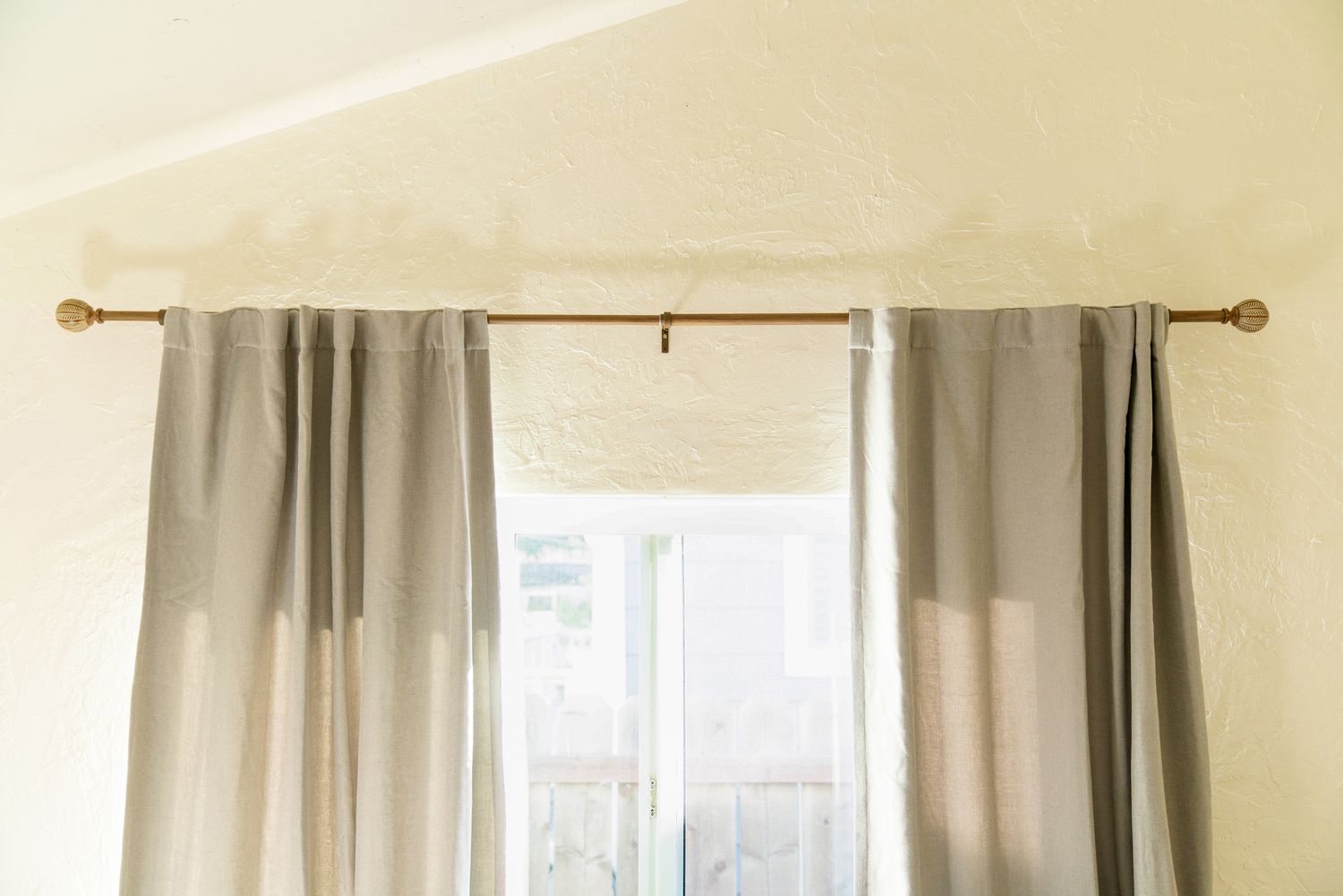

Interior Design
How High Should I Hang My Curtains? The Rules Designers Follow
Modified: January 19, 2024
Find out the recommended height for hanging curtains in your interior design. Discover the rules that designers follow for the perfect curtain placement.
(Many of the links in this article redirect to a specific reviewed product. Your purchase of these products through affiliate links helps to generate commission for Storables.com, at no extra cost. Learn more)
Introduction
When it comes to home interior design, curtains play a crucial role in enhancing the overall look and feel of a space. They add texture, color, and privacy to a room while also serving as a functional element to control light and temperature. However, hanging curtains at the right height can sometimes be a challenging task.
So, how high should you hang your curtains? Well, there are no hard and fast rules, but there are some guidelines that interior designers follow to create visually appealing and well-proportioned window treatments. In this article, we will explore these rules and provide you with the knowledge to make informed decisions about hanging curtains in your home.
Whether you’re starting from scratch or looking to update your existing window treatments, understanding the different curtain heights and how they can impact the overall aesthetic of your space is essential. By following the advice of experts, you can achieve a harmonious balance between functionality and style.
So, let’s dive in and discover the rules designers follow when it comes to hanging curtains at just the right height!
Key Takeaways:
- Achieving the perfect curtain height involves considering window size, style, and personal preference. Whether at floor level or above the window frame, each option creates a unique ambiance in your space.
- By following standard guidelines and considering window size and style, you can create visually appealing and well-proportioned window treatments. Achieve a harmonious balance between functionality and style for a stunning interior design.
Read more: How High Should You Hang Curtains
Finding the right height for your curtains
When it comes to finding the right height for your curtains, there are a few factors to consider. The size and style of your windows, the overall design of the room, and your personal preferences all play a role in determining the ideal curtain height.
An important aspect to keep in mind is that curtains should visually elongate the window and create the illusion of height. They should also make the room feel balanced and well-proportioned. To achieve this, here are some guidelines to follow:
1. Consider the window size and style:
The size and style of your windows will influence the curtain height. For large windows, you may want to opt for floor-length curtains to create a dramatic and grandiose effect. On the other hand, for smaller windows, curtains that reach the window sill or just below it can be more suitable.
2. Measuring for curtain length:
To determine the appropriate curtain length, you should measure from where you want the curtains to start to where you want them to end. This will depend on the style you desire and the height of your windows.
3. Standard curtain height guidelines:
While there are no strict rules, there are some standard guidelines that designers often follow. These include:
- Floor level: Curtains that skim or slightly puddle on the floor give a luxurious and elegant look.
- Above the floor: Curtains that are a few inches above the floor can create a clean and tailored appearance.
- Window sill height: Curtains that hang at the window sill can give a casual and relaxed feel.
- Above the window sill: Curtains that go a few inches above the window sill provide a polished and stylish look.
- Window frame height: Curtains that hang at the window frame can highlight the architecture and draw attention to the window.
- Above the window frame: Curtains that extend a few inches above the window frame create a sense of height and add drama to the space.
It’s important to note that these guidelines can vary depending on personal preference, the specific style of your room, and the overall aesthetic you want to achieve.
By considering the size and style of your windows, measuring for curtain length, and following the standard height guidelines, you can find the right height for your curtains that will beautifully enhance the look of your space.
Consider the window size and style
When determining the appropriate height for your curtains, it’s crucial to take the size and style of your windows into account. These factors will play a significant role in achieving a balanced and visually appealing look.
Let’s start with window size. If you have large windows, such as floor-to-ceiling windows or bay windows, you have the opportunity to create a grand and luxurious feel in your space. In this case, floor-length curtains that extend all the way to the floor or even slightly puddle on the floor can be a stunning choice. This length will draw the eye upward, making the windows appear larger while adding a touch of elegance.
On the other hand, if you have smaller windows, you have a few different options to consider. Curtains that reach the window sill or just below it are a popular choice as they create a clean and tailored look. This length also allows for easy opening and closing of the curtains without getting in the way.
Next, let’s explore the window style. Different window styles call for different curtain heights to complement their unique design. For example, if you have windows with decorative molding or trim, you may want to consider hanging the curtains at the window frame height to showcase the architectural details. This height will frame the window elegantly and draw attention to its design.
Alternatively, if you have modern and minimalistic windows, such as those with a sleek and clean look, you may want to hang the curtains just above the window sill or a few inches above it. This height will maintain the clean lines of the window while complementing its contemporary style.
Remember, the size and style of your windows are an essential factor in determining the curtain height. Take the time to assess your windows and consider your overall design aesthetic to ensure the curtains enhance the beauty of the windows and the entire room.
Measuring for curtain length
Measuring for curtain length is a crucial step in determining the right height for your curtains. It ensures that the curtains will fit perfectly and enhance the overall aesthetic of your space. Here are some steps to follow when measuring for curtain length:
1. Start by determining where you want the curtains to start. This can be at the top of the window frame, just above the window sill, or even a few inches above the floor, depending on your desired look.
2. Measure from the desired starting point to where you want the curtains to end. This will typically be at the floor, just below the floor, or anywhere in between, depending on your preference.
3. To achieve a relaxed and casual look, you can opt for curtains that hang slightly above the floor. Measure from the desired starting point to about 1-2 inches above the floor. This length will create a soft and breezy look, perfect for spaces with a laid-back vibe.
4. For a more tailored and polished look, curtains that skim or slightly puddle on the floor can create a luxurious and elegant ambiance. Measure from the desired starting point to about 1-2 inches beyond the floor to achieve this length. Keep in mind that if your curtains touch the floor, they may require occasional adjustment to prevent wear and tear.
5. If you prefer a more minimalist and clean-lined aesthetic, you can opt for curtains that hang just below the window sill. Measure from the desired starting point to a few inches below the sill to achieve this length. This will create a sleek and modern look, especially for windows with decorative molding or trim.
6. Lastly, if you want to draw attention to the windows and highlight their architectural features, you can hang the curtains at the window frame height. Measure from the desired starting point to the top of the window frame to achieve this length. This height will showcase the windows and create a focal point in the room.
Remember to take accurate measurements and consider the overall design aesthetic of the room when determining the curtain length. Measuring correctly will ensure that the curtains fit perfectly and enhance the visual appeal of your space.
Standard curtain height guidelines
While there are no strict rules when it comes to curtain height, there are some standard guidelines that interior designers often follow to create visually pleasing window treatments. These guidelines can help you achieve a well-proportioned and balanced look in your space. Here are the standard curtain height recommendations for various scenarios:
- Floor level: Curtains that skim or slightly puddle on the floor can create a luxurious and elegant look. This length is especially suitable for formal spaces such as dining rooms or master bedrooms. The curtains gently graze the floor, creating a sense of opulence and grandeur.
- Above the floor: If you prefer a cleaner and more tailored look, curtains that hang a few inches above the floor can be an excellent choice. This length is ideal for high-traffic areas or rooms with pets or young children, as it prevents the fabric from touching the floor. It also makes cleaning and maintenance easier.
- Window sill height: Curtains that hang at the window sill height are a popular option for kitchens, bathrooms, and casual living spaces. This length creates a relaxed and informal feel and works well with windows that have a sill. The curtains frame the window, providing a finished look.
- Above the window sill: For a more polished and stylish appearance, curtains that extend a few inches below the window sill can be a great choice. This length adds visual interest while still maintaining a clean and proportional look. It works well in rooms where you want to create a more refined and sophisticated ambiance.
- Window frame height: Hanging curtains at the window frame height is an excellent option if you want to highlight the architectural elements of your windows. This length draws attention to the window and adds a touch of drama to the space. It works well in rooms with large windows or windows with decorative molding or trim.
- Above the window frame: For a statement-making effect, curtains that extend a few inches above the window frame can be a bold choice. This length creates a sense of height and adds a dramatic flair to the room. It works particularly well in rooms with high ceilings or for those who want to make a design statement.
Remember that these standard guidelines can vary depending on personal preference, the specific style of your room, and the overall aesthetic you want to achieve. Consider the function, style, and size of your windows when choosing the appropriate curtain height.
By following these standard curtain height guidelines, you can create a visually pleasing and well-designed window treatment that complements your space perfectly.
Read more: How High Should I Hang A Coat Rack?
Hanging curtains at floor level
Hanging curtains at floor level can create a luxurious and elegant look in your space. This length is especially suitable for formal rooms such as dining rooms or master bedrooms where you want to add a touch of opulence and grandeur. Here are some tips for hanging curtains at floor level:
1. Measuring for floor-length curtains: To ensure that your curtains reach the floor, measure from the top of the curtain rod to the floor. Make sure to add a few extra inches to account for the curtain rod and any desired puddling effect.
2. Creating a gentle puddling effect: If you want to achieve a more lavish look, you can intentionally allow the curtains to slightly puddle on the floor. This effect creates a sense of opulence and adds depth to the overall design. However, be mindful that excessive puddling can be a tripping hazard, especially in high-traffic areas or homes with pets or young children.
3. Hemming the curtains: If you find that your curtains are too long and create a safety hazard or are simply impractical for your lifestyle, you can hem them to the desired length. Hemming is a straightforward process that can be done by hand or with the help of a sewing machine. This way, you can still achieve the floor-length look while ensuring safety and functionality.
4. Maintaining the floor-length look: It’s important to keep in mind that floor-length curtains may require occasional adjustment to maintain their appearance. Being in contact with the floor can cause wear and tear over time. To keep your curtains looking their best, regularly check for any signs of damage or dirt buildup and perform necessary cleaning and maintenance.
Hanging curtains at floor level adds an elegant and sophisticated touch to any room. It visually elongates the windows, creating a sense of height and grandeur. Whether you choose to let the curtains gently skim the floor or create a subtle puddling effect, this curtain height will enhance the overall aesthetic of your space.
Take into consideration the function of the room, the style of your windows, and your personal preferences when deciding to hang curtains at floor level. With proper measurements and attention to detail, you can create a stunning and luxurious look that will leave a lasting impression on anyone who enters your space.
Hang your curtains 4-6 inches above the window frame to create the illusion of a taller ceiling. The curtains should also touch the floor or have a slight break for a polished look.
Hanging curtains above the floor
Hanging curtains above the floor can create a clean and tailored look in your space. This option is ideal for rooms where a more practical and functional approach is desired, such as high-traffic areas or homes with pets or young children. Here are some tips for hanging curtains above the floor:
1. Measuring for curtains above the floor: To ensure that your curtains hang above the floor, measure from the top of the curtain rod to the desired length. This could be a few inches above the floor or anywhere in between, depending on your preferences and the style of your room.
2. Achieving a crisp and polished appearance: By hanging the curtains above the floor, you create a clean and tailored look that adds a touch of sophistication to your space. This length allows for easier maintenance and cleaning as the curtains won’t touch the floor, minimizing the risk of dirt accumulation or tripping hazards.
3. Considering the style of your room: The decision to hang curtains above the floor should be based on the overall style and aesthetic of your room. For modern and minimalist spaces, curtains that hang just above the floor can maintain the clean lines and simplicity of the design. For more traditional or formal rooms, curtains that hang a few inches above the floor can still create an elegant and sophisticated look.
4. Hemming the curtains: If you find that your curtains are too long and touch the floor despite your intentions to hang them above, you can easily adjust the length by hemming them. Hemming curtains is a straightforward process and can be done by hand or with the assistance of a sewing machine. This way, you can achieve the desired height for your curtains while maintaining functionality and style.
Hanging curtains above the floor is a practical and aesthetically pleasing option. It allows for easier maintenance and cleaning while still adding a touch of elegance to your space. Consider the style and function of the room, as well as your personal preferences when deciding to hang your curtains above the floor.
By taking accurate measurements and paying attention to detail, you can achieve a well-proportioned and visually appealing look that complements the overall design of your room. Whether your curtains hang just above the floor or a few inches higher, this height option can enhance the beauty and functionality of your space.
Hanging curtains at window sill height
Hanging curtains at window sill height can create a casual and relaxed feel in your space. This option is especially suitable for rooms such as kitchens, bathrooms, or casual living areas. Curtains at window sill height provide a finished look and allow for easy access to the window for opening and closing. Here are some tips for hanging curtains at window sill height:
1. Measuring for curtains at window sill height: To ensure that your curtains hang at window sill height, measure from the top of the curtain rod to the bottom of the window sill. This length will create a balanced and proportional look, framing the window and adding a touch of coziness to the space.
2. Creating a relaxed and casual appearance: Curtains that hang at window sill height create a laid-back and informal vibe in your room. This length is perfect for rooms where you want to maintain a sense of openness and allow natural light to flood in while still adding a decorative element to the window.
3. Considering the style of your windows: The decision to hang curtains at window sill height should be based on the style of your windows. If your windows have a prominent sill or decorative molding, curtains at this height can help emphasize those architectural features. It creates a cohesive and visually appealing look that enhances the overall design of the room.
4. Selecting appropriate curtain styles: When hanging curtains at window sill height, consider choosing curtain styles that work well with this length. Light and airy fabrics can create a breezy and relaxed atmosphere, while patterns and colors can add interest and personality to the space. Consider the overall design aesthetic of the room and choose curtains that complement it.
Hanging curtains at window sill height offers a practical and stylish option for your windows. It provides a finished look, protects privacy, and allows for easy access to the window. Consider the style and function of the room, the specific design features of your windows, and your personal preferences when deciding to hang your curtains at window sill height.
By taking accurate measurements and selecting appropriate curtain styles, you can achieve a cohesive and visually pleasing look that adds a touch of charm and comfort to your space.
Hanging curtains above the window sill
Hanging curtains above the window sill is a popular choice that can add a polished and stylish look to your space. This option works well in various rooms, including formal living rooms, bedrooms, or dining areas. Curtains hung above the window sill create a visually pleasing and proportionate appearance. Here are some tips for hanging curtains above the window sill:
1. Measuring for curtains above the window sill: To ensure that your curtains hang above the window sill, measure from the top of the curtain rod to the desired length. This can be a few inches above the sill or anywhere in between, depending on your preference and the overall aesthetic you want to achieve.
2. Achieving a clean and proportional look: By hanging the curtains above the window sill, you create a more tailored and streamlined appearance in the room. This length helps maintain a clean line between the curtains and the sill, allowing for a cohesive and visually pleasing design.
3. Considering the style of your windows: The decision to hang curtains above the window sill should take into account the style of your windows. If your windows have decorative molding or interesting trim, hanging the curtains above the sill can help showcase those architectural details. It draws attention to the windows and adds a touch of elegance to the space.
4. Selecting appropriate curtain styles: When choosing curtains to hang above the window sill, consider the overall design aesthetic of the room. Sheer or light fabrics can create an airy and elegant look, while heavier fabrics can add richness and warmth to the space. Consider the color, pattern, and texture of the curtains to complement the room’s decor.
Hanging curtains above the window sill offers an opportunity to enhance the visual appeal of your space. It creates a clean and proportional look that adds a touch of sophistication to the room. Consider the function, style, and size of your windows when deciding to hang your curtains above the window sill.
By taking accurate measurements and selecting appropriate curtain styles, you can achieve a well-proportioned and visually appealing look that complements the overall design of your room. Whether your curtains hang a few inches above the window sill or slightly higher, this height option can add elegance and charm to your space.
Read more: How High Should I Hang Towel Ring
Hanging curtains at window frame height
Hanging curtains at window frame height can create a visually stunning and architecturally focused look in your space. This option is particularly suitable for rooms with unique or decorative window frames, such as bay windows, or for those who want to draw attention to the windows as a focal point. Here are some tips for hanging curtains at window frame height:
1. Measuring for curtains at window frame height: To ensure that your curtains hang at window frame height, measure from the top of the curtain rod to the top of the window frame. This length will frame the window elegantly and draw attention to its design.
2. Highlighting architectural features: Hanging curtains at window frame height is an excellent way to showcase the architecture of your windows. If your windows have decorative molding, interesting trim, or unique shapes, this curtain height will emphasize those features and add visual interest to the room.
3. Creating a dramatic effect: Curtains at window frame height can add a sense of drama and sophistication to your space. The length creates a striking visual impact, especially in rooms with high ceilings or large windows. It can make a bold design statement and elevate the overall aesthetic of the room.
4. Considering the style of your windows: Before hanging curtains at window frame height, consider the style of your windows and how they will interact with the curtains. Make sure the curtain rods and hardware complement the window style and don’t obstruct any unique architectural elements.
5. Accessorizing with curtains: When choosing curtains to hang at window frame height, consider the overall design aesthetic of the room. Sheer or lightweight fabrics can create an ethereal and airy look, while heavier fabrics can add texture and depth. Consider the color, pattern, and texture of the curtains to enhance the style of your space.
Hanging curtains at window frame height allows you to highlight the architectural beauty of your windows and make a bold statement in your room. Remember to take accurate measurements, consider the style of your windows, and select appropriate curtain styles to achieve a visually appealing and harmonious look.
With careful execution, this curtain height option can transform your space into an inviting and visually stunning environment that showcases the beauty of your windows and adds a touch of elegance to your room.
Hanging curtains above the window frame
Hanging curtains above the window frame can create a sense of height and add a touch of drama to your space. This option is ideal for rooms with low ceilings or for those who want to make a bold design statement. Here are some tips for hanging curtains above the window frame:
1. Measuring for curtains above the window frame: To ensure that your curtains hang above the window frame, measure from the top of the curtain rod to the desired length. This can be a few inches above the frame or anywhere in between, depending on the overall aesthetic you want to achieve.
2. Creating a sense of height: Hanging curtains above the window frame can visually elongate the windows and create the illusion of higher ceilings. This length option is especially suitable for rooms with low ceilings, as it draws the eye upward and helps to create an airy and spacious feel.
3. Adding a dramatic flair: Curtains that extend above the window frame can add a touch of drama and sophistication to your space. This height creates a striking visual impact and can serve as a focal point in the room. It’s a great option if you want to make a bold design statement or add a sense of grandeur to your space.
4. Considering the style of your windows: Before hanging curtains above the window frame, consider the style and shape of your windows. Ensure that the curtain rods and hardware complement the window design and allow for smooth opening and closing of the curtains. It’s important to balance functionality with aesthetics when choosing this curtain height.
5. Selecting appropriate curtain styles: When choosing curtains to hang above the window frame, consider the overall design aesthetic of the room. Sheer or lightweight fabrics can create a soft and ethereal look, while heavier or patterned fabrics can add depth and texture. Experiment with different colors, patterns, and textures to find the perfect curtains that complement your style.
Hanging curtains above the window frame offers an opportunity to add a sense of grandeur and make a design statement in your space. Remember to measure accurately, consider the style of your windows, and select appropriate curtain styles to achieve a visually engaging and cohesive look.
With careful execution, this curtain height option can transform your room into a captivating and elegant space that showcases your unique style and reflects your personality.
Conclusion
When it comes to hanging curtains, finding the right height is essential to create a visually pleasing and well-designed space. By considering factors such as window size, style, and personal preferences, you can achieve the perfect curtain height that enhances the overall aesthetic of your room.
Whether you choose to hang curtains at floor level, above the floor, at window sill height, above the window sill, at window frame height, or above the window frame, each option offers its own unique benefits and can create a different ambiance in your space.
Floor-length curtains can add a touch of luxury and elegance to formal rooms, while curtains above the floor provide a clean and tailored look, perfect for high-traffic areas. Hanging curtains at window sill height can create a casual and relaxed vibe, while curtains above the window sill add polish and style. Curtains at window frame height draw attention to architectural details, and curtains above the window frame add drama and height to the room.
Remember to measure accurately, take the style of your windows into consideration, and choose appropriate curtain styles to achieve a cohesive and visually appealing look. Take your time to experiment and find the perfect curtain height that suits your space and personal taste.
Whether you’re redesigning your space or starting from scratch, understanding the rules that designers follow when it comes to curtain height can help you create a harmonious and well-proportioned room. By striking the right balance between functionality and style, you can transform your windows into a focal point that enhances the overall beauty of your home.
So, next time you hang curtains in your home, remember to consider the rules and guidelines shared in this article. With a thoughtful approach, you can create a beautiful and inviting space that reflects your unique style and makes a lasting impression on anyone who enters.
Frequently Asked Questions about How High Should I Hang My Curtains? The Rules Designers Follow
Was this page helpful?
At Storables.com, we guarantee accurate and reliable information. Our content, validated by Expert Board Contributors, is crafted following stringent Editorial Policies. We're committed to providing you with well-researched, expert-backed insights for all your informational needs.

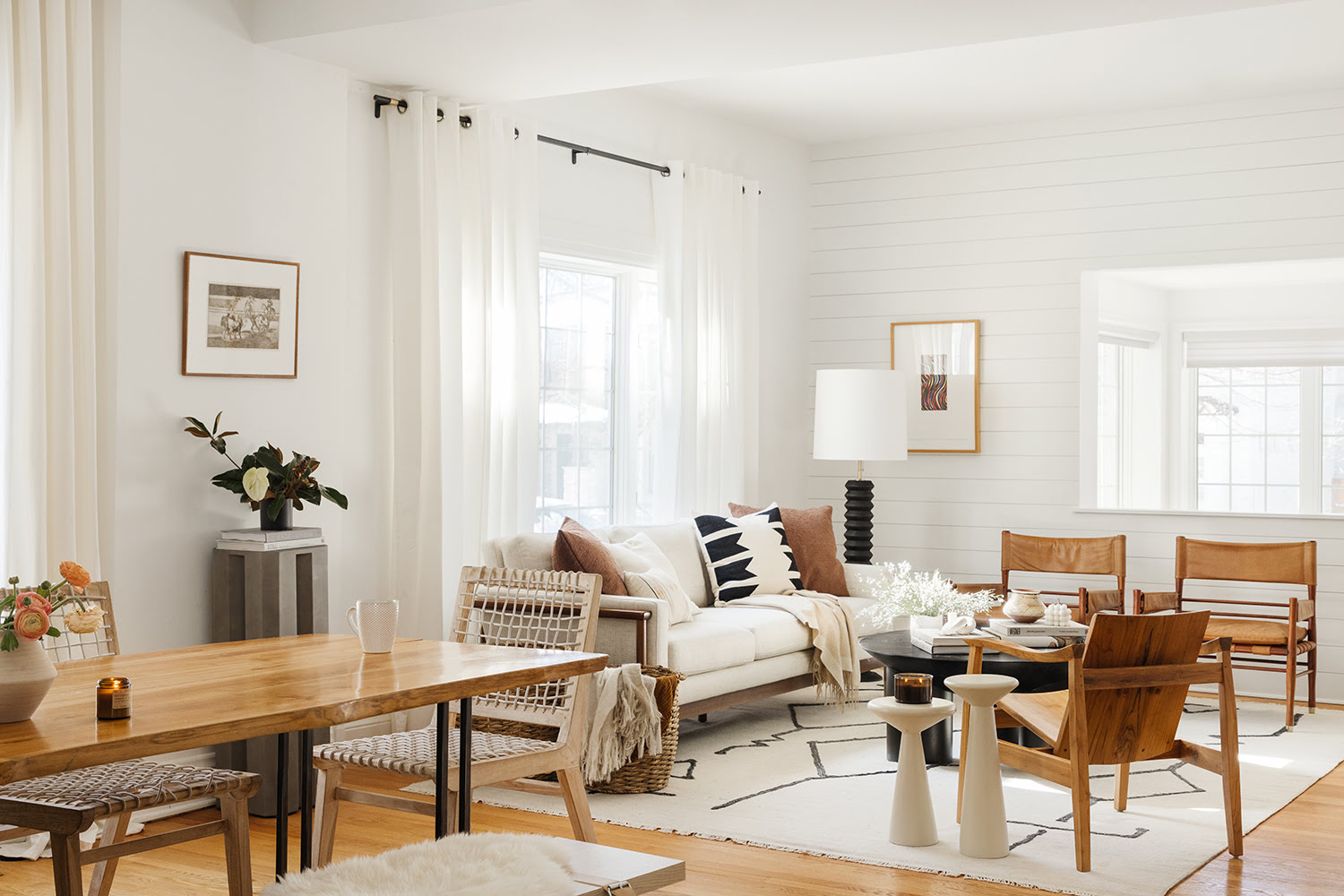


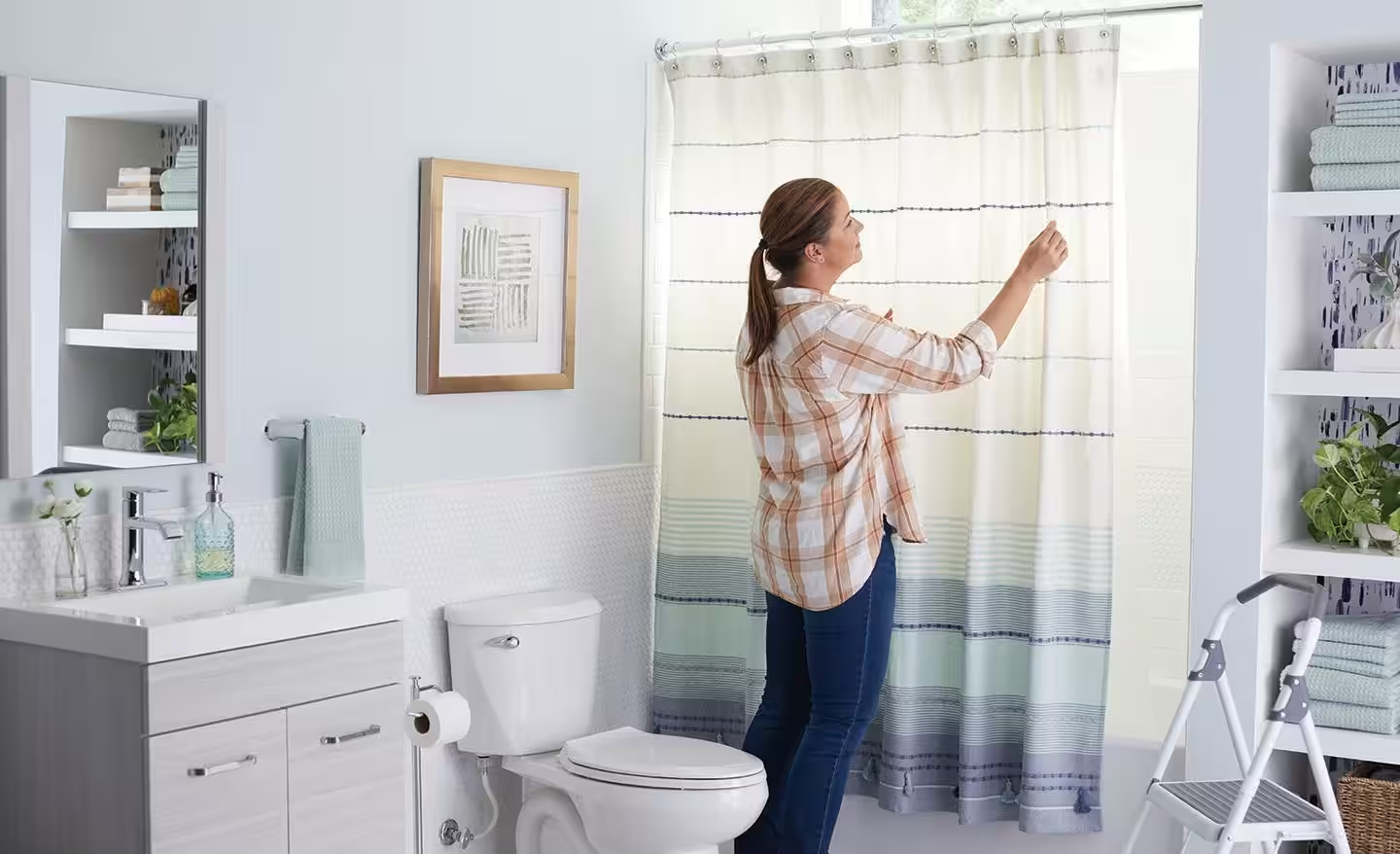
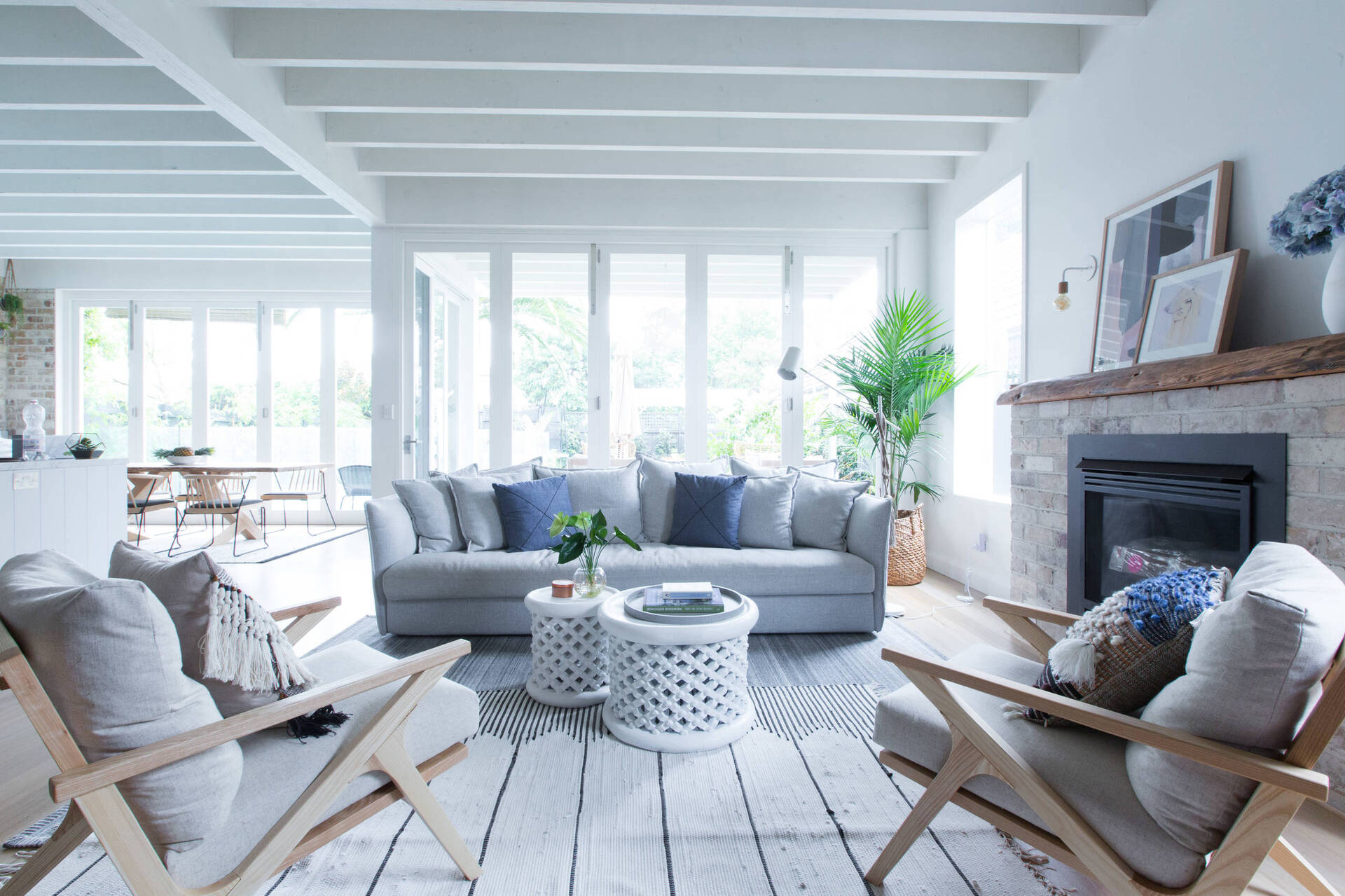


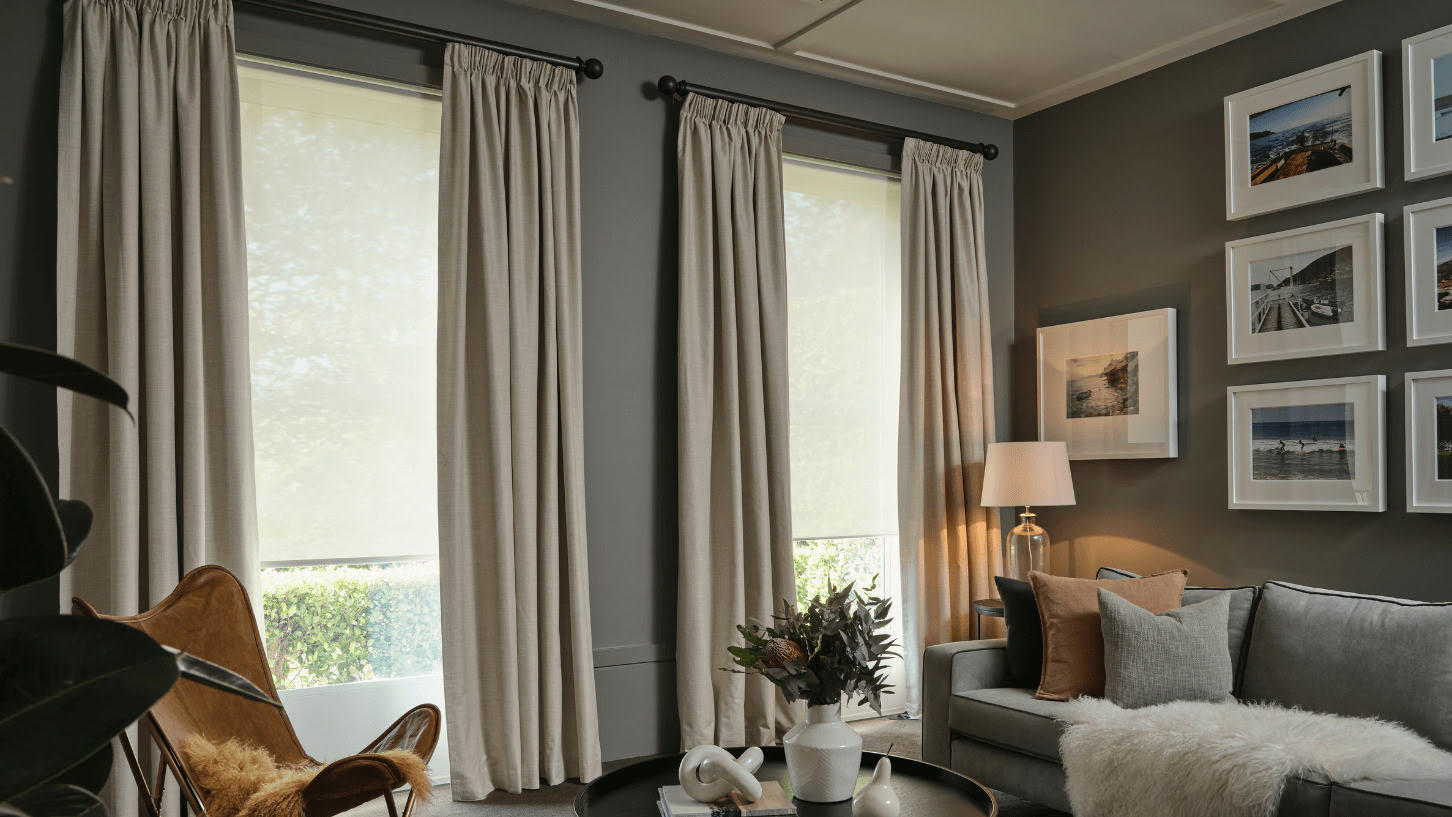
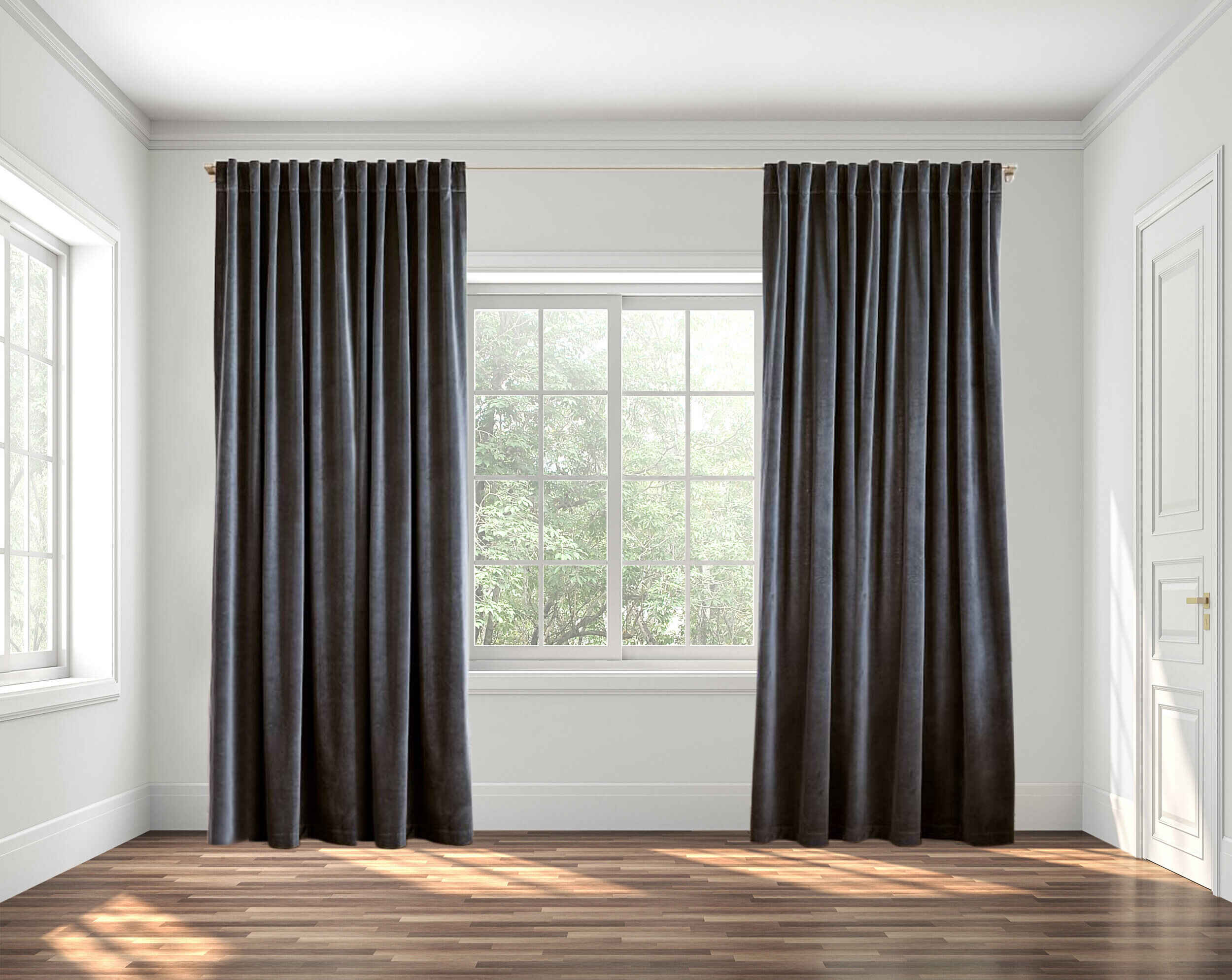
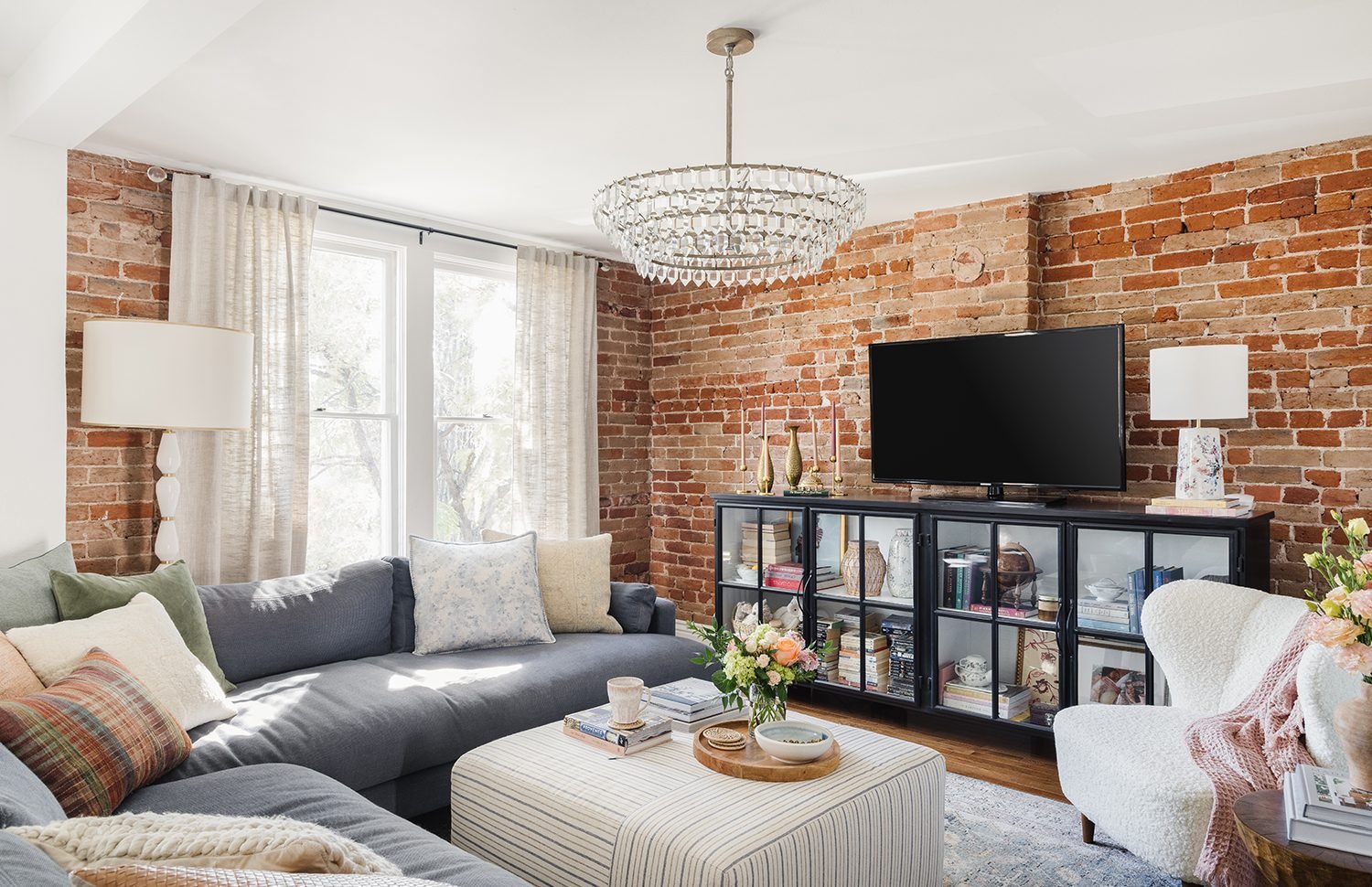
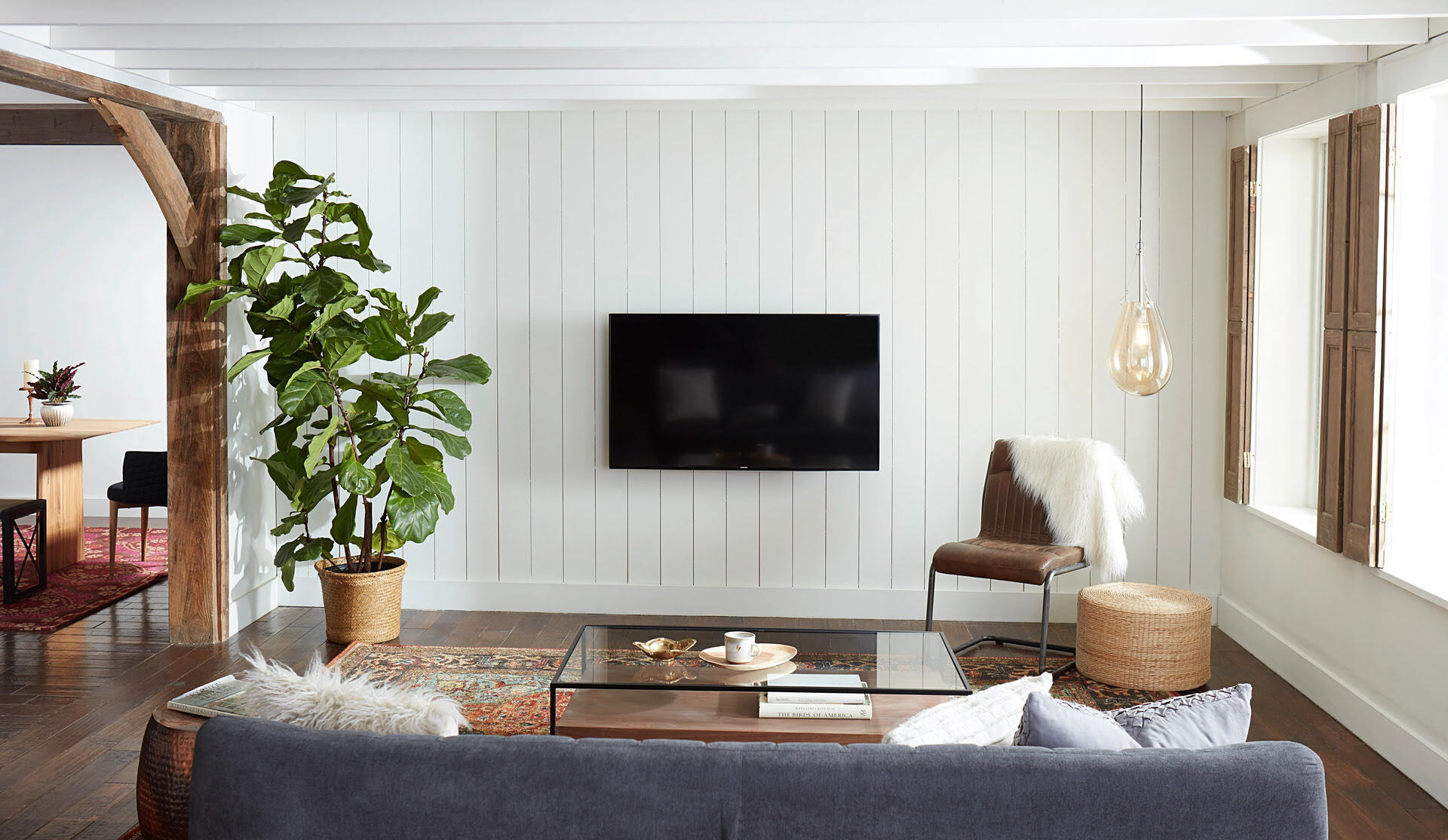
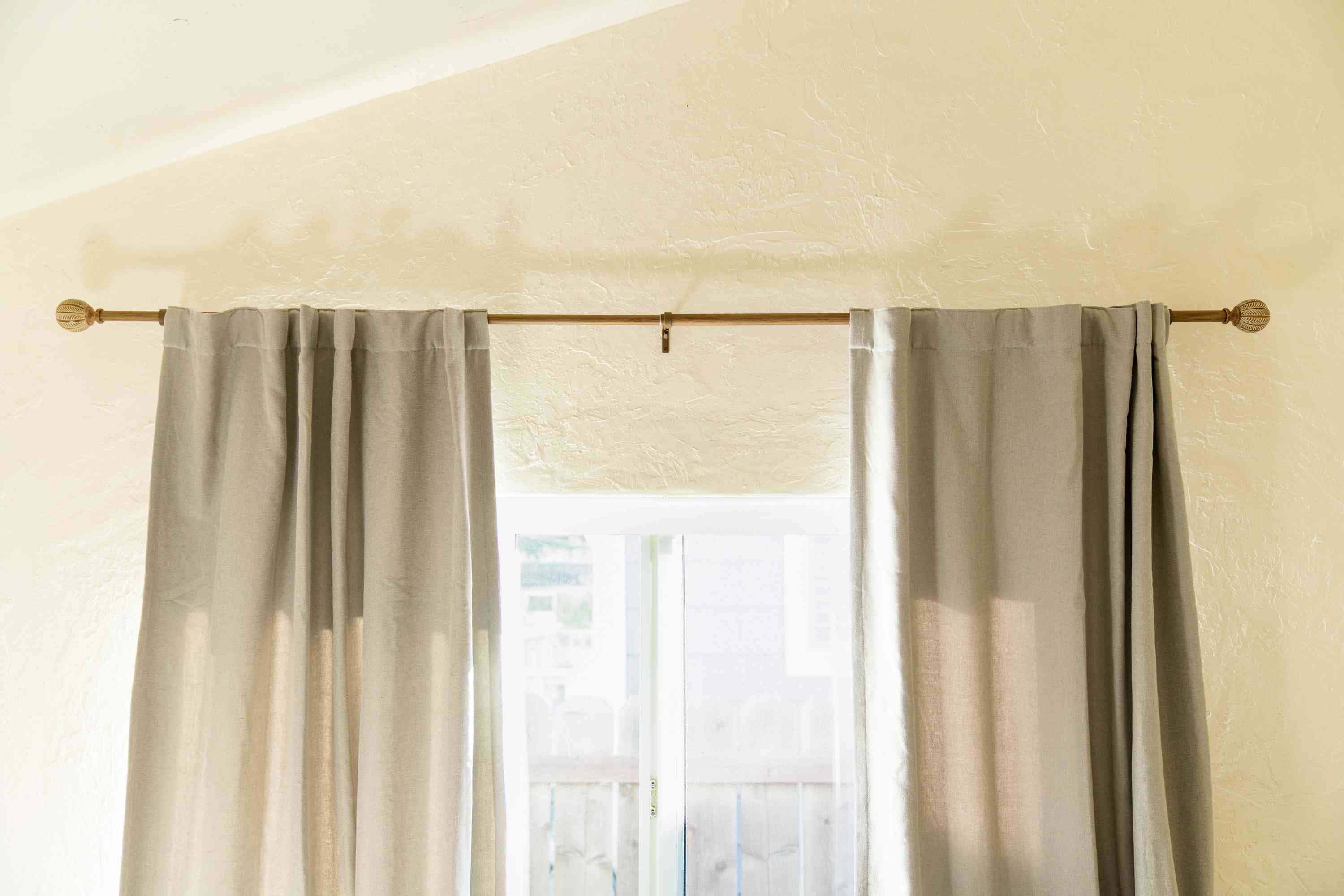

0 thoughts on “How High Should I Hang My Curtains? The Rules Designers Follow”